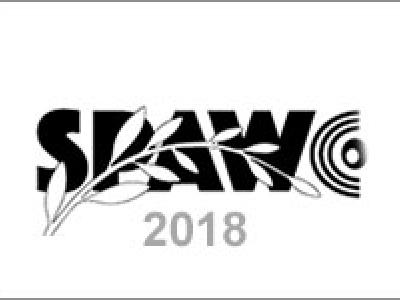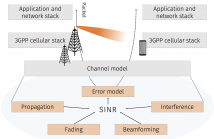
Using information about the wireless communica- tion channel is a well known approach to estimate a users position. So far it has been shown that such methods can provide positioning information in line-of-sight (LOS) situations by estimating channel properties like time of flight, direction of arrival, and direction of departure of a link between a single access point and station. In this paper we focus on mmWave channels and propose a method that allows positioning in indoor scenarios even under non-line-of-sight conditions by exploiting the presence of scatterers.
- Categories:
 76 Views
76 Views
- Read more about Efficient Techniques for Broadcast of System Information in mmWave Communication Systems
- Log in to post comments
In this paper we consider Millimeter wave (mmWave) Massive MIMO systems where a large antenna array at the base station (BS) serves a few scheduled terminals. The high dimensional null space of the channel matrix to the scheduled terminals is utilized to broadcast system information to the non-scheduled terminals on the same time-frequency resource.
- Categories:
 46 Views
46 Views
- Read more about Impact of Channel Models on the End-to-End Performance of mmWave Cellular Networks
- Log in to post comments
Communication at mmWave frequencies is one of the major innovations of the fifth generation of cellular networks, because of the potential multi-gigabit data rate given by the large amounts of available bandwidth. The mmWave channel, however, makes reliable communications particularly challenging, given the harsh propagation environment and the sensitivity to blockage. Therefore, proper modeling of the mmWave channel is fundamental for accurate results in system simulations of mmWave cellular networks.
spawc-poster-v1.pdf
- Categories:
 38 Views
38 Views- Read more about ADC BIT ALLOCATION UNDER A POWER CONSTRAINT FOR MMWAVE MASSIVE MIMO COMMUNICATION RECEIVERS
- Log in to post comments
- Categories:
 25 Views
25 Views
- Read more about A probabilistic interference distribution model encompassing cellular LOS and NLOS mmWave propagation
- Log in to post comments
We propose a novel probabilistic model for the interference power distributions in a cellular network employing MIMO beamforming in mmWave spectrum. Considering both line-of-sight (LOS) and non-line-of-sight (NLOS) propagations, we use the Gamma distribution for LOS interference power, and propose a mixture of the Inverse Gaussian and Inverse Weibull distributions for the NLOS interference power. For the NLOS mixture model, an expectation maximization algorithm is developed using both analytical moment matching and maximum likelihood estimation.
- Categories:
 27 Views
27 Views
- Read more about Beam Tracking for Mobile Millimeter Wave Communication Systems
- Log in to post comments
Millimeter wave (mmWave) is an attractive option for high data rate applications. Enabling mmWave communications requires appropriate beamforming, which is conventionally realized by a lengthy beam training process. Such beam training will be a challenge for applying mmWave to mobile environments. As a solution, a beam tracking method requiring to train only one beam pair to track a path in the analog beamforming architecture is developed. Considering its low complexity which is suitable for mobile settings, the extended Kalman filter is chosen as the tracking filter.
- Categories:
 260 Views
260 Views- Read more about Pilot Aided Direction of Arrival Estimation for mmWave Cellular Systems
- Log in to post comments
Direction of arrival (DoA) estimation of high-resolution beams is critical for cell search and maintaining communication in millimeter wave (mmWave) cellular systems. All-digital solutions for DoA estimation, however desirable for their flexibility and performance, are impractical because of their use of high-speed, power hungry Analog-Digital Converters (ADCs) at each antenna element. In this paper we take a novel approach to formulate a fully digital DoA estimation solution.
- Categories:
 34 Views
34 Views